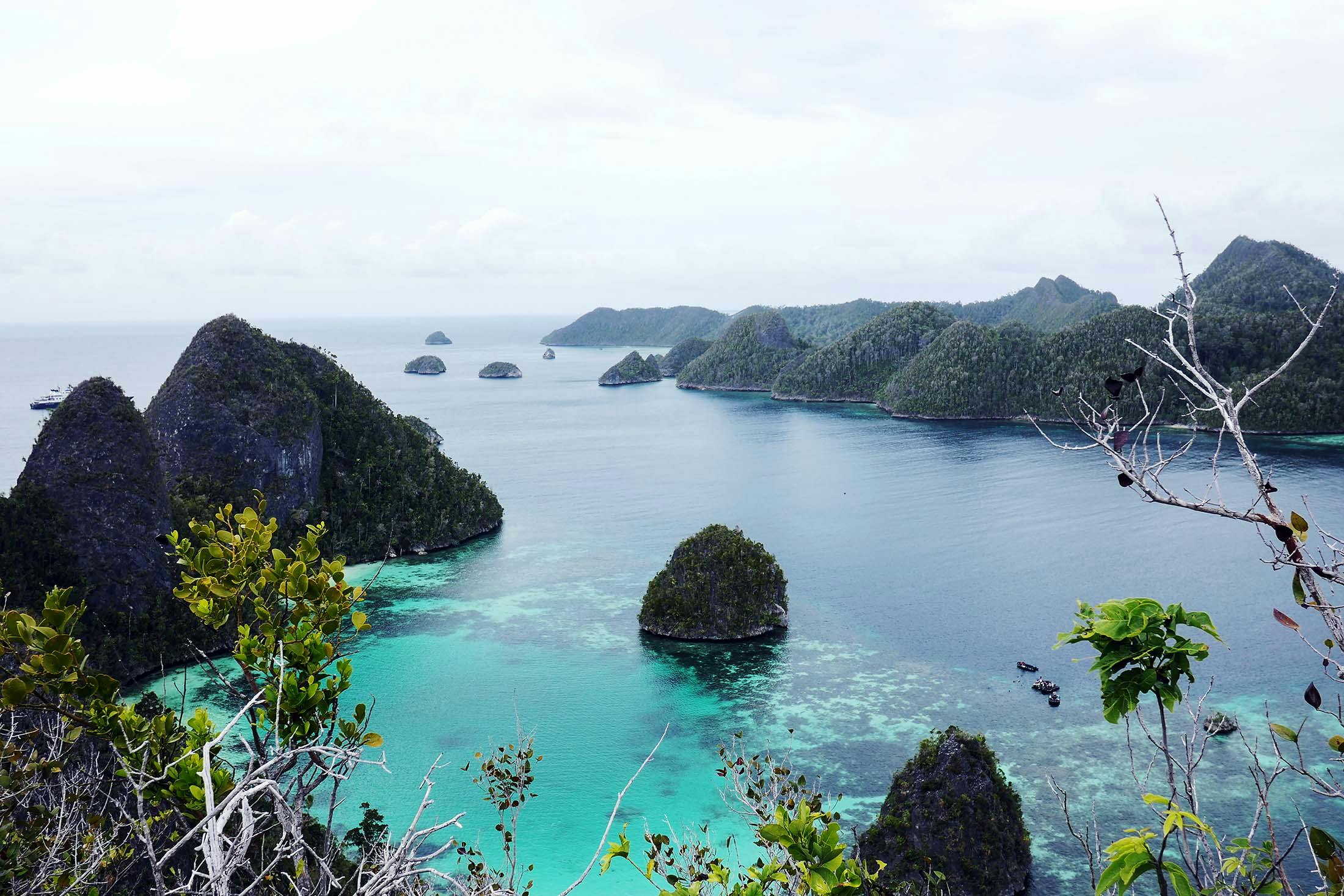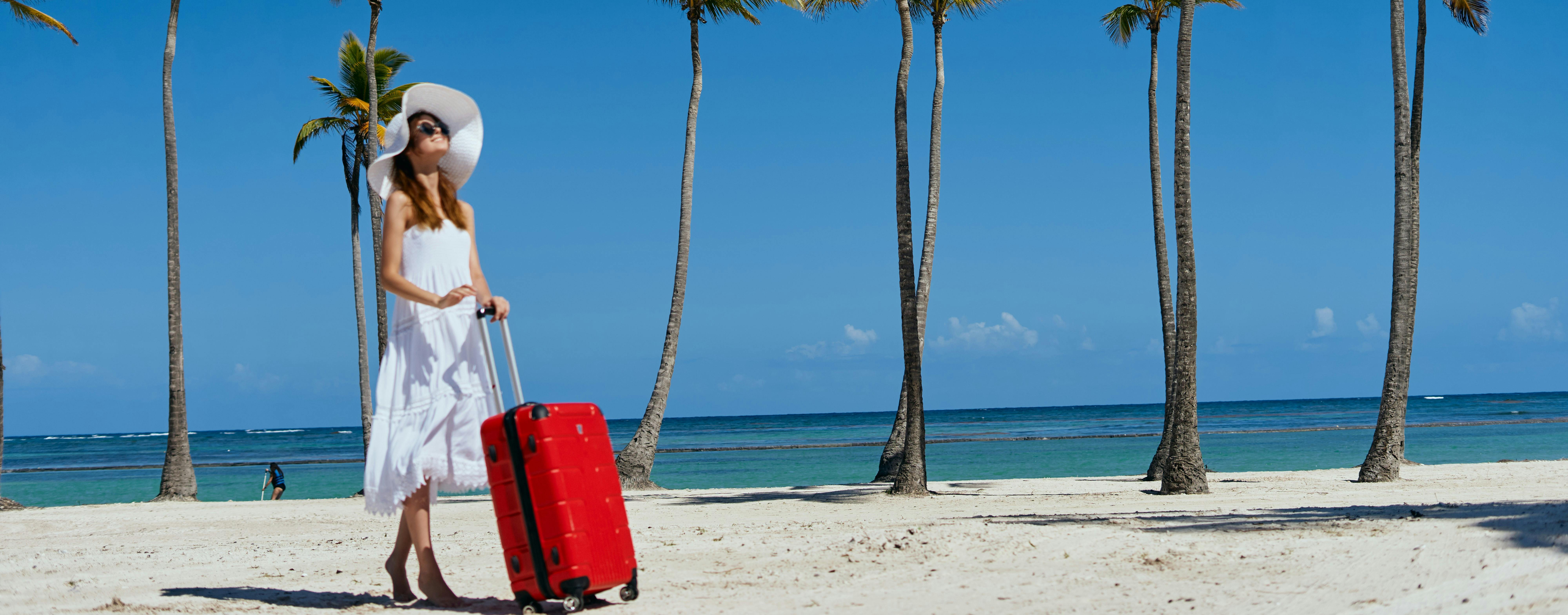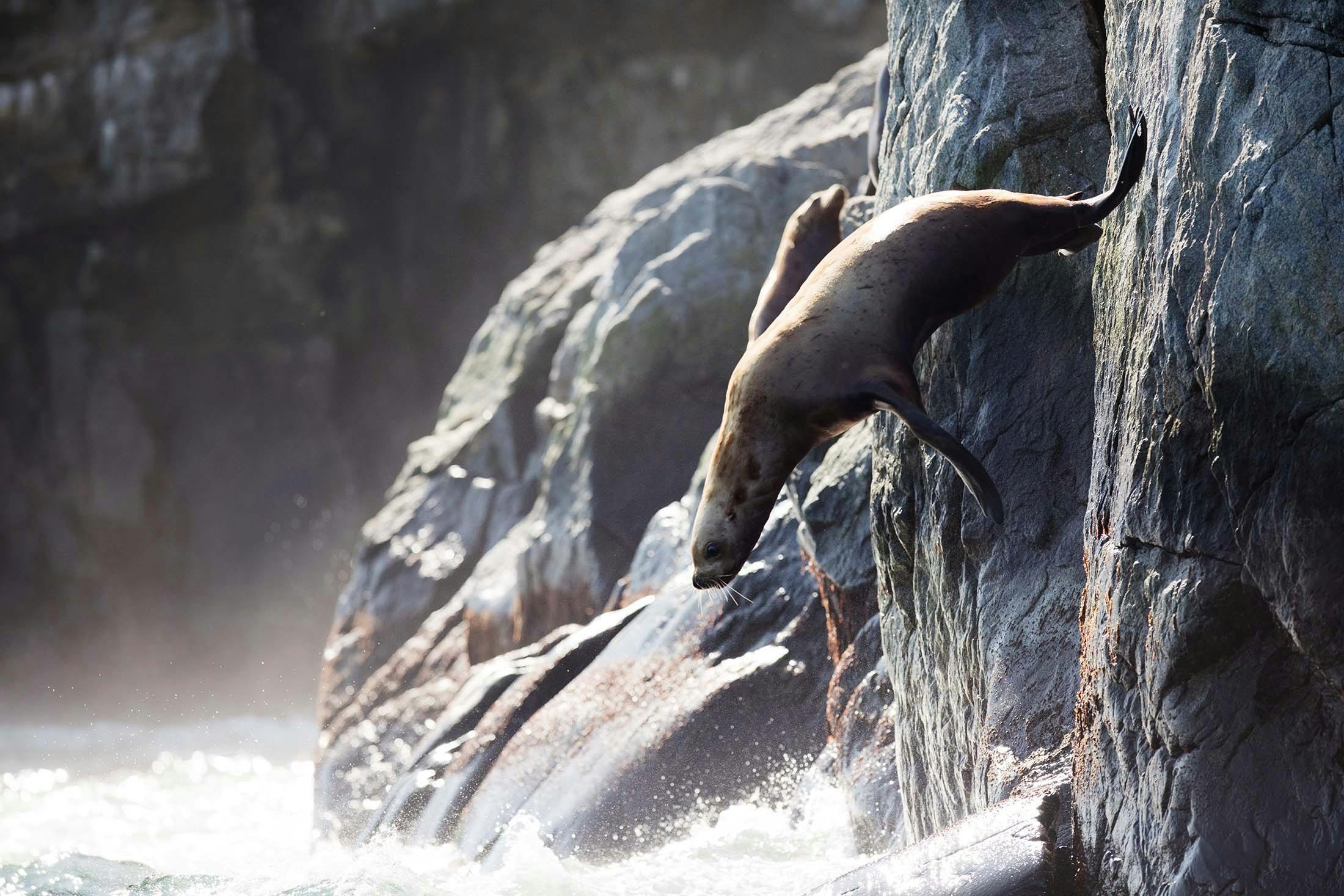Explore the Best Ports in the South Seas on a Trip to Bora Bora
A small confession to begin: I have a thing for islands, especially in the South Pacific. I’ve hop-scotched around the South Pacific on sloops, yachts, freighters and cruise ships across 100 islands, atolls or reefs.
You’ll find some of the most beautiful islands in the world here: eye-popping blue waters, swaying palm trees, powdery beaches and idyllic sunny days. Isn’t it time you finally take that trip to Bora Bora or discover the lesser-known Tuamotu Atolls? Here are some of my favorite South Seas ports.
French Polynesia
Rangiroa, Tuamotu Archipelago
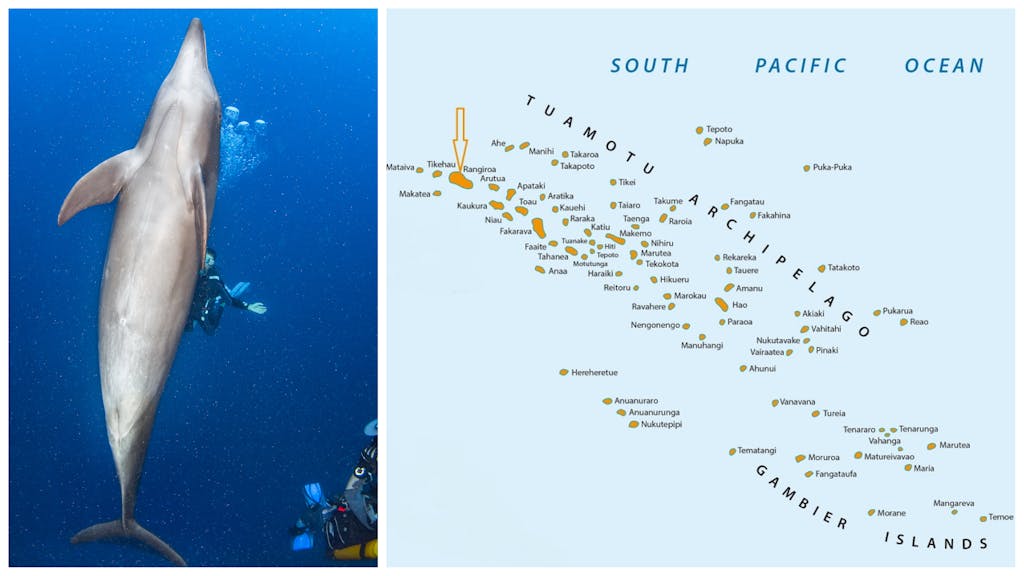
School was in session as a pod of bottlenose dolphins leapt into the air and did back flips. A small crowd gathered as I eagerly glimpsed the show.
When the tide changes on this French Polynesian atoll, 8- to 12-foot waves churn through Tiputa Pass, creating a thunder of clashing water, riptides and whirlpools that can kill an unwary or unprepared swimmer.
The dolphins of Rangiroa, however, revel in it. The Tiputa Pass becomes their playground, a place to soar and dive and frolic.
On that spring day, I gazed, spellbound, from a veranda suspended over the sea. I didn’t realize this then, but I was being welcomed to the French Polynesian atoll of Rangiroa by its most famous residents, a school of dolphins that lives in the pass that separates the atoll’s lagoon.
I had arrived just a few hours earlier at Rangiroa (Rain-GHEE-ro-ah) in the Tuamotu Archipelago, a string of nearly 100 coral atolls.
Rangiroa, which means “vast sky,” is one of the largest atolls in the world. It stretches more than 110 miles, encircling a lagoon so deep that the sprawling city of Los Angeles (about 466 square miles) could nearly fit within it.
But unlike the L.A., there are no mountain peaks or sweeping valleys. Instead, flattened islets and skinny sandbars encircle the perimeter of Rangiroa’s vast blue lagoon, a formation that lets you enjoy seemingly endless horizons.

Cars are few here. The main villages of Avatoru and Tiputa include coral churches, craft centers, local restaurants and boulangeries, along with a few locally owned shops. Jewelry lovers will appreciate the black pearl farms, which dot the lagoon.
Rangiroa is considered one of the world’s best diving destinations, thanks to its crystalline waters, abundant marine life, hordes of sharks and majestic rays and, of course, the wild dolphins that play at Tiputa Pass.
The atoll, like its sister island Tahiti, 200 miles southwest, is a French territory, and most of its 2,500 residents speak French or Tahitian. The French Pacific Franc (CFP) is the currency of French Polynesia. The value is pegged to the euro. Tipping is uncommon in French Polynesia.
Nuku Hiva and Hiva Oa, Marquesas Islands

The Marquesas Islands are among the most remote places on Earth. Anchored in the Pacific, they are nearly 1,000 miles northwest of Tahiti and 3,000 miles from Mexico, the nearest land mass.
Isolation puts a crimp on tourism. You won’t find a Maui-style luau here or a lounge-show featuring Polynesian dancers. But you will find authenticity: dances and feasts at a community center where residents turn out to welcome you.
The Marquesas are an archipelago, spread out over 12 islands, of which only six are inhabited.
Nuku Hiva, one of the largest islands in French Polynesia, boasts a lush landscape that includes spectacular waterfalls and towering cliffs descending into the Pacific Ocean. Nuku Hiva also has many hiking trails.
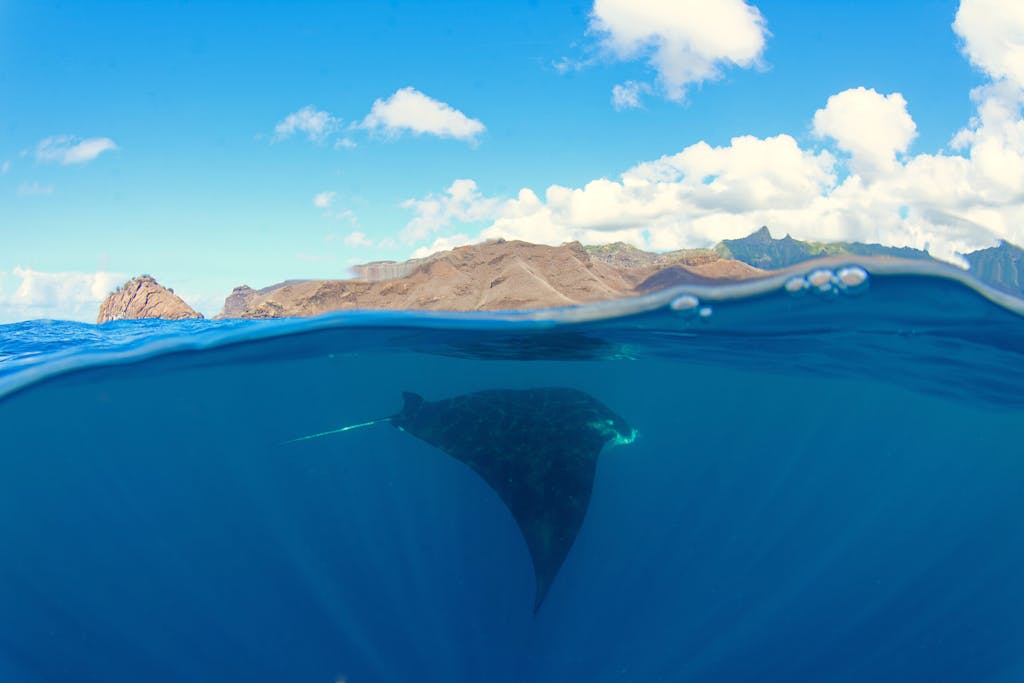
Taiohae, the main town, acts as the “capital” of the Marquesas. Sailboats bob in a crescent-shaped bay, and locals trot through town on horseback. Some beautiful handicrafts are available, including carved hardwood, sandalwood and bone.
The island also has a Stone-Age art hub and several archaeological sites, including tikis and ancient rock-pile ruins.
Time seems to sit still in the small Marquesan villages on the island of Hiva Oa, which has a mix of lofty volcanic peaks, lush jungle and coastal cliffs.
Hidden here are the tombs of two great artists, French painter Paul Gauguin and Belgian singer Jacques Brel.

Gauguin, a post-Impressionist, abandoned his family and business in Europe and moved to the Marquesas in 1891. He disdained European civilization and focused on paintings of the Pacific — the women, the landscape and observations of daily life. He died a pauper on May 8, 1903, unappreciated until after his death.
Like Gauguin, Brel (1929-1978) originally worked at a conventional job. But he felt unfulfilled working at his father’s cardboard factory and began performing in cabaret clubs in Brussels. He eventually moved to Paris, attracting tens of thousands of fans and a worldwide following. He died at 49 in Hiva Oa.
They retreated to the Pacific about a century apart. Today their graves are just a few feet from each other near the village of Atuona. I made a pilgrimage there one spring day, walking the 6.6-mile route. An ancient plumeria tree marked the site high on a hill overlooking the island. Its gnarled branches bore no leaves but were alive with fragrant white blossoms.
Bora Bora, Society Islands
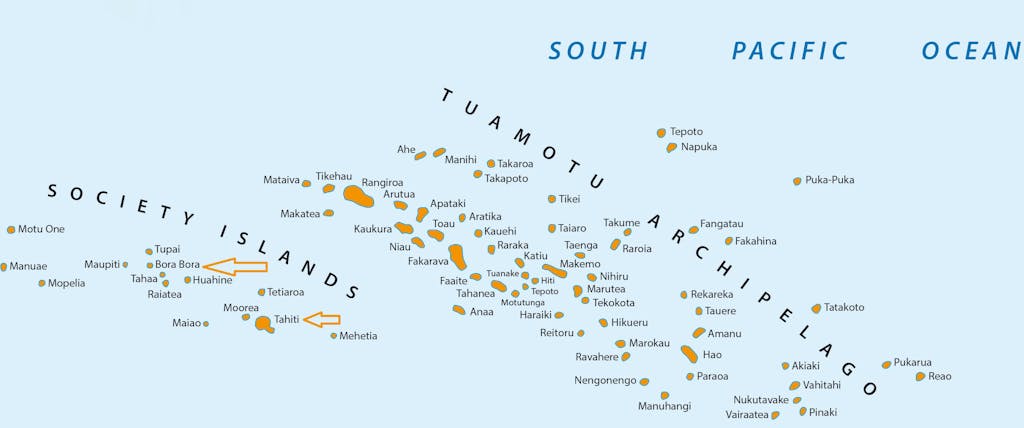
Bora Bora, one of the most romantic islands in the South Pacific, offers two blissful ingredients: beauty and the beach.
This 12-square-mile island is surrounded by a lovely, shallow lagoon ringed by a coral reef. It abounds with luxury resorts, sunny skies, warm waters and friendly residents.
The water looks much as it did when author James Michener dubbed the lagoon the “most beautiful in the world.” Michener, stationed here during World War II, is said to have used the island as one of the models for the mythical Bali Hai in his book “Tales of the South Pacific,” from which the musical “South Pacific” was adapted. The 18th-century British explorer James Cook called it the “Pearl of the Pacific.”
On my first trip to Bora Bora, I arrived on a sailboat with a friend, and we were nearly penniless. But the color of the water, from pale turquoise to cobalt blue, electrified me, and the coral reefs and fish glowed in a rainbow of colors. The experience was so magical that I became an island aficionado, visiting the world’s atolls and islands the way some people collect visits to the 50 states. Bora Bora is still one of the best; I’ve been back twice since that first visit.
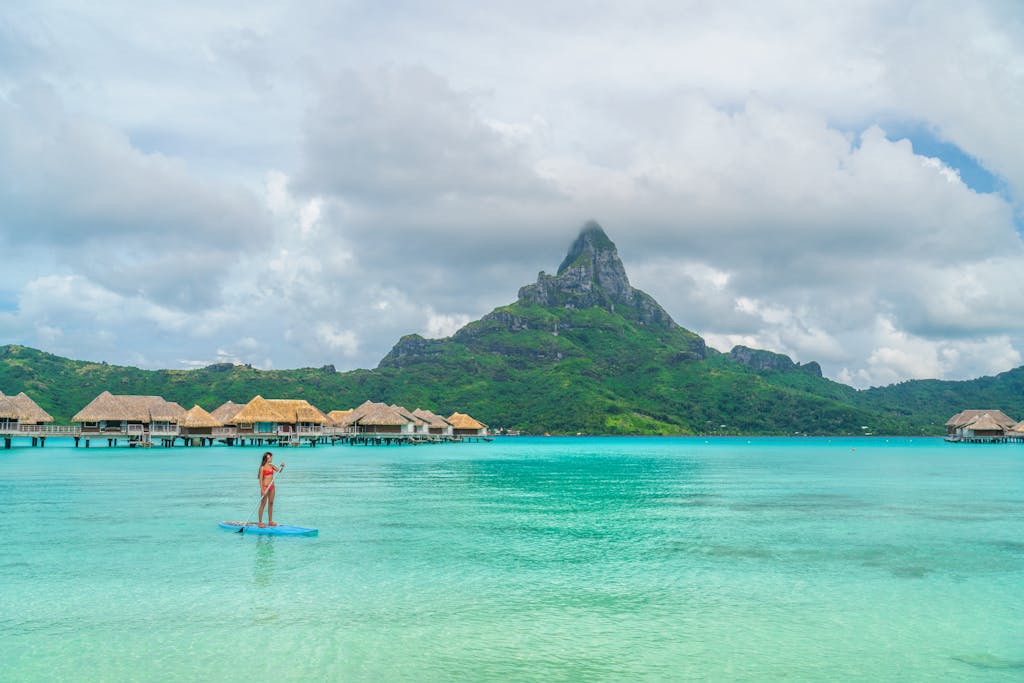
The water remains 43 shades of blue, and it took me just a few minutes underwater with a yellow butterfly fish to fall in love all over again with the best-known of Tahiti’s sister islands.
But my little sister is growing up. Bora Bora is one of French Polynesia’s most popular tourist destinations, second only to the main island of Tahiti. It has fewer tourists than Tahiti, which has allowed Bora Bora to remain the iconic French Polynesian Eden.
Tropical flowers and vegetation still cloak the valleys and mountain sides, and islanders still set up small roadside stands from which they sell pineapples, taro and just-caught wahoo.
The island is a French territory, and most natives speak Tahitian and French, but there are enough English speakers to help tourists be comfortable. Visitors usually enjoy Bora Bora’s water sports and its shark- and ray-feeding expeditions.

You can explore Mount Otemanu, a jagged remnant of an ancient volcano that rises to about 2,400 feet above the lagoon. Or visit Vaitape (Bora Bora’s main port), which offers banking and shopping, including several pearl shops. Note that the only true black pearls are known as Tahitian pearls; others have been dyed to obtain this color. But Bora Bora itself? It’s a true gem.
Rarotonga and Aitutaki, Cook Islands, Pacific
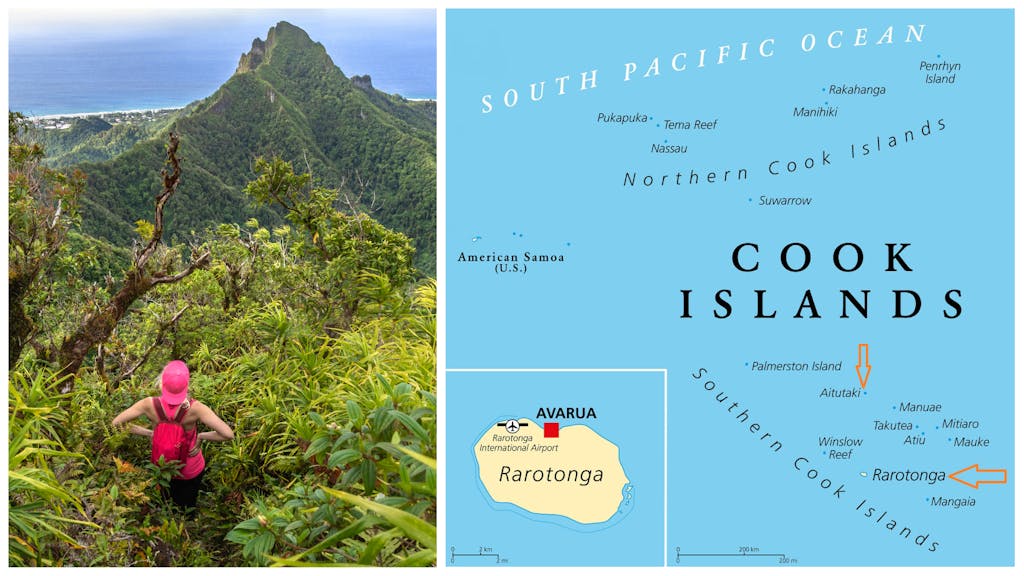
Locals contend that the color blue was invented in the Cook Islands. Scattered and remote in the South Pacific, the island country is pure tropical paradise, complete with scores of shades of blue, lush green mountains and white sandy beaches.
The 15 islands, named for the 18th-century explorer Capt. James Cook, are strung across 850,000 square miles of ocean midway between Hawaii and New Zealand. About 18,000 people live here, all in the same time zone as Hawaii.
Unlike its famous neighbor Tahiti, 600 miles east, the Cook Islands have no McDonald’s restaurants, no stop lights and no buildings taller than the tallest coconut tree. They differ from French Polynesia in another way: Nearly everyone speaks English.
Rarotonga is the hub of the Cook Islands. Hop on a scooter or rent a car; it takes only 45 minutes to drive around it. Alternatively, take a bus on the main road (clockwise and counterclockwise). You need only smile and wave them down.
You can dance with fire during a cultural show, explore local markets selling pareus, handmade quilts, souvenirs and exquisite black pearls, some of the best in the South Pacific.
Make sure to visit Aitutaki, one of the most dazzling spots in the South Pacific: It’s the blue lagoon of your daydreams, the one that surfaces on a dreary afternoon.
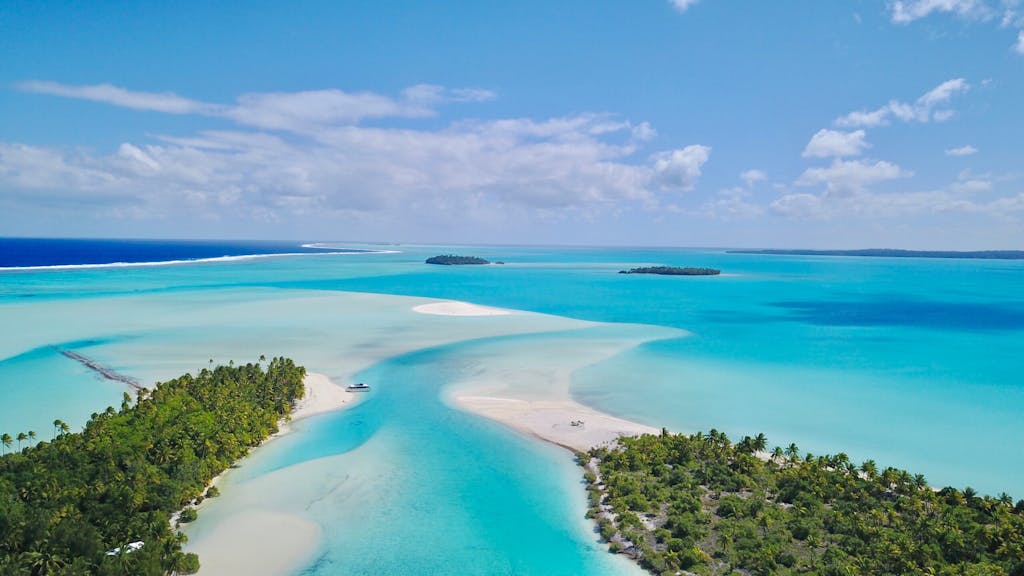
Secluded and romantic, Aitutaki includes 15 turquoise islets sprinkled across a huge sunlit lagoon. Almost everything you see is blue, and sea and sky are a continually changing palette of blues, greens and grays. Farther out, the Pacific Ocean merges with the sky.
A lagoon cruise is a high point here, especially if it includes a picnic lunch, a walk across to the reef side of the island or snorkeling. You can try fishing, diving, hiking or cycling, in laid-back mode or full-on-adrenaline frenzy.
Which port fulfills your South Seas island fantasy? If you can’t decide there are cruises to French Polynesia that visit several of these incredible locales, each as equally stunning as the one before it.
Dreaming of a trip to Bora Bora? Explore this iconic island and other intriguing ports on a South Pacific cruise.





